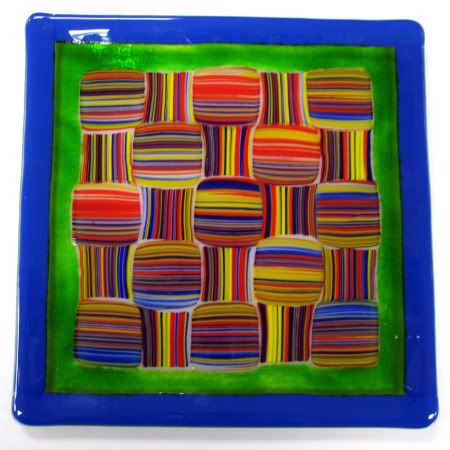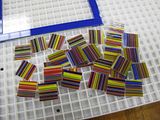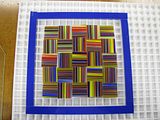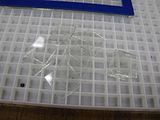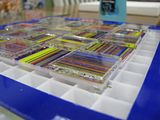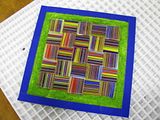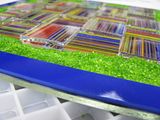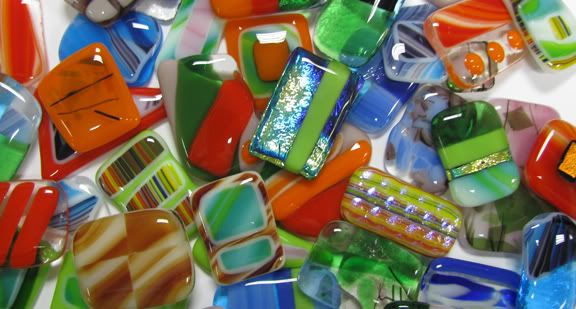
Scrap Glass. With every completed project, the amount of it grows and grows. Sometimes I have a hard time coming up with ways to use it. I look at all the scrap glass we have and get a little overwhelmed. There are simply too many possibilities, so I get a small case of option paralysis.
Option paralysis: The tendency, when given unlimited choices, to make none.
So, one day I came up with an idea for how to combat this phenomenon. Thus, the Great Glass Pendant Challenge was born. The pendant challenge eliminated option paralysis and the amount of scrap glass, but it also made for a very cool and fun exercise that I think will work well in a studio atmosphere.
There are several variables that can be changed to make this fit a variety of circumstances, but the general idea is very simple to initiate.
This is how I did it.
Step 1) Get Participants
My co-workers Crista and Kristin agreed to the challenge, so we had three including myself. This exercise will work with one person or many, but the more the merrier.
Step 2) Decide on a time frame for the challenge.
I think we chose 30 minutes, but it can be any length to fit your time frame.
Step 3) Get Glass
Each person collects ten pieces of scrap glass, all varying in colors, types (stringers, noodles, rods) and sizes. We also chose one secret ingredient, a piece of Dichroic from a Jazzy Jar. You can choose more or less pieces of glass, different numbers of each type, etc. Just make sure each person gets a wide variety of colors and types. We cut many 1" x 2" clear blanks in case anyone wanted to use a blank. These blanks do not count towards the ten pieces.
Step 4) The Switcheroo
Once the glass has been chosen, set it on your work surface. Now the fun begins. Each person will not use the glass they have selected, but by the person sitting on their left. So everyone move one seat to the left. Why, you ask? Because I thought it would be fun to do it this way. Besides, this exercise is designed for you to have fun, and to get people to think a little out of the box.
Step 5) What's next
After the time is up it's likely that there will be glass left over. We moved another seat to our left and made more projects with that glass until we either ran out of glass or ideas. A time limit can also be set for this step.
So there you have it. The Great Glass Pendant Challenge. Use it as a fun night for your customers, a team building exercise for your studio employees, or for any other purpose you see fit. One thing is for sure, it will reduce the ever growing amount of scrap glass in your studio and will be a great time for all involved.
Unfortunately, all the fun photos taken during our challenge were lost when my hard drive decided to go on permanent vacation, so I don't have anything showing who made what. I have since taken individual pictures of all the pendants that were made. They can be viewed here. Enjoy!
If you have any questions I can be reached by email at warmglassguy@gmail.com
